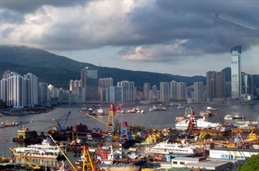
On August 7, nearly 70 U.S. trade partners were subject to the modified reciprocal tariffs laid out in President Donald Trump's July 31 executive order.
The reciprocal tariffs took effect at rates ranging from 10% to 50% depending on trade status and national security considerations.
Nations not specifically exempted—such as China and Canada—now face a baseline 10% tariff, with higher rates for transshipped goods or certain sectors like steel and autos. Some nations, like Japan, South Korea, Vietnam, and the Philippines, have negotiated partial trade frameworks, while others—such as Brazil and India—are penalized for unresolved trade disputes or geopolitical concerns.
Flexport said goods qualify for the reciprocal in-transit exception if they were loaded onto a vessel at the port of origin and were already in transit on their final mode of transportation before August 7 at 12:01 a.m. ET. To remain exempt, shipments must arrive and be entered for consumption before October 5 at 12:01 a.m. ET.
Goods determined to have been transshipped to evade duties will be subject to a 40% tariff.
The reciprocal tariffs that took effect on August 7 are expected to impact key logistics corridors and air cargo hubs.
For Asia–U.S. routes: Southeast Asia ports (Vietnam, Malaysia, Philippines) are seeing increased demand due to lower tariff rates compared to China, which faces a 34% rate until August 12.
It could also raise transshipment risk: Goods routed through third countries to avoid tariffs now face a 40% penalty tariff, prompting shippers to favor direct routes and verified origin documentation.
Under the new reciprocal tariffs, European goods entering the U.S. with a general duty rate below 15% will now face a supplemental levy to meet that threshold. The move is prompting some importers to pivot toward U.S.-based suppliers or bonded zones.
Meanwhile, President Trump signed an Executive Order imposing an additional 25% tariff on all Indian imports. On August 6, the U.S. published an executive order that will levy an additional 25% blanket duty on India beginning August 27, just days after imposing a 25% reciprocal tariff scheduled for August 1.
For logistics and air cargo operators, the new tariffs could also increase costs and complicate routing decisions, especially for shipments originating in Asia or transiting through multiple ports. The changes may also prompt shifts in demand toward more direct air freight lanes and alternative sourcing strategies.



